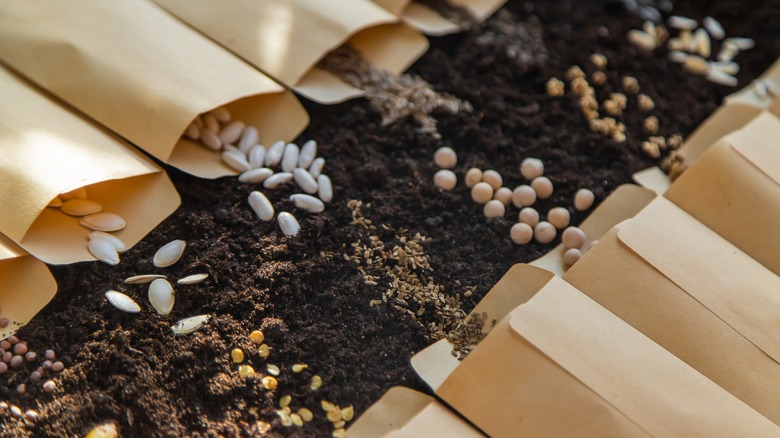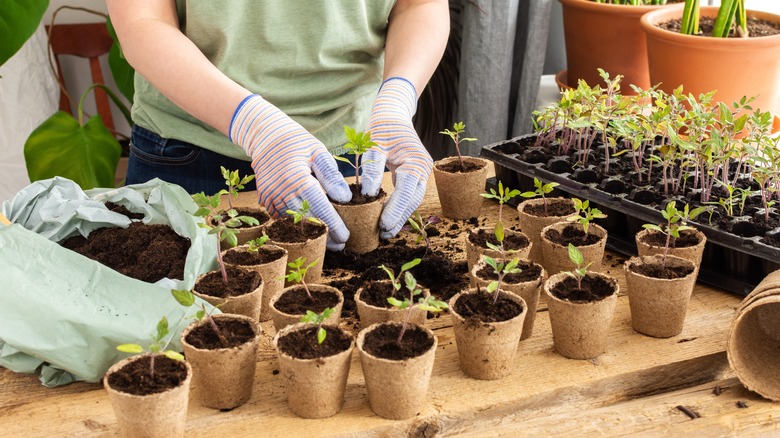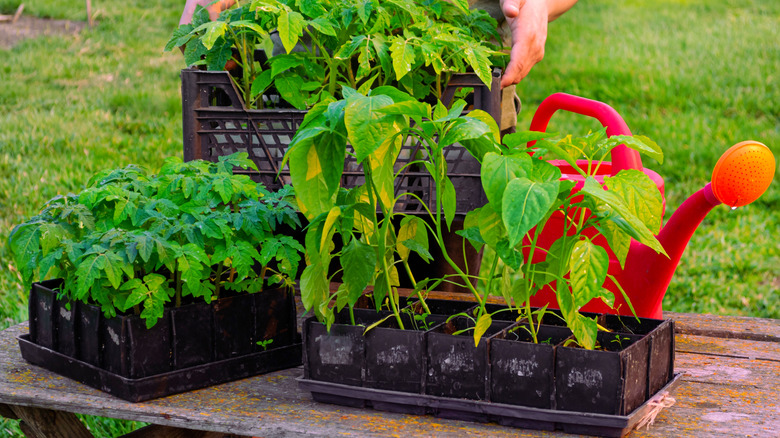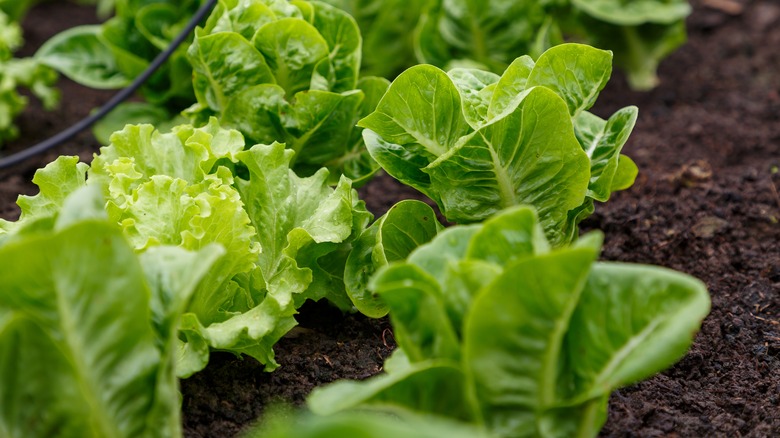What Seeds Should You Start Indoors And Why It Matters
As you plan your spring and summer garden, knowing which seeds you can directly sow into the garden and which ones you should start indoors can be difficult. Seed packets offer some general information but rarely state how to start a specific plant. Thankfully, a few basic rules help you decide when and where to start your seeds.
Before discussing which varieties you should start indoors, let's discuss those you should not. The general rule for root crops is to directly sow them outdoors. Radishes, turnips, and carrots have a taproot — the thick, dense root for which these plants are grown. As soon as the seeds sprout, they begin developing that root, which should not be disturbed. And if you think about it, do you really want to transplant 50 tiny radishes? It just makes sense to start these in the garden.
Planting legumes like green beans and sweet peas directly in the ground is also ideal, as well as anything from the cucurbit family (melons, squash, or cucumbers), since they do not like to have their roots disturbed once they are established. Now, let's talk about what seeds you should start indoors.
Plants that take a long time to mature
You can get a significant head start on your garden by starting plants that take a long time to mature indoors about six to eight weeks before your last expected frost date. Because of how long they take to produce, tomatoes and peppers are often started inside under grow lights. Tomatoes average around 80 days to maturity, although some specialty varieties produce fruit more quickly. Some of the best-tasting cultivars are heirloom varieties that take 100 days or more. Peppers, which are related to tomatoes, also average around 80 days to maturity. Getting a two-month head-start on these ensures you enjoy a significantly larger harvest before it gets cold.
Seed packets usually list days to maturity on the package. That time frame begins when the seed is planted and extends to when you can expect your first harvest. For example, if you start bell peppers that take 90 days to reach maturity, you can expect to harvest about three months after planting. If you start your seeds indoors at the beginning of March and give them eight weeks to grow, you can anticipate your first harvest around early June. In contrast, if you direct sow seeds when the soil is warm enough, which is early May in many regions, you will have to wait until the beginning of August to enjoy fresh produce.
Varieties that need specific growing conditions
Some plants need a specific environment to sprout, particularly those that require warm soil. If you want a head start on your okra harvest, you can start seeds indoors using a heat mat to get the soil warm enough for germination. Okra loves heat, so the soil temperature must be at least 75 degrees Fahrenheit to sprout. Peppers also like warm soil temperatures, and you will have more success getting them to germinate if you use a heat mat. These heat and sun-loving plant varieties also need at least 8 hours of direct light from a grow light per day.
If you live in an area with long, hot summers but still want to enjoy a fall harvest of cool-weather vegetables like broccoli, cabbage, and Brussels sprouts, you can start them indoors when it's too hot outside. By getting them started early indoors, the seedlings are ready to plant when those long summer days give way to autumn. Although you can direct sow these, it can be tricky to keep tender seedlings alive when the soil surface dries out so quickly. However, starting indoors can help keep your garden going through late fall.
Sometimes it's about personal preference
Depending on your preference, you can start some plants indoors or out. If you want an early start on head lettuce types, like romaine, it is easy to start them indoors under a grow light, and it only takes about six weeks to be big enough to transplant. Since lettuce is tolerant of frost, you can get a very early start on your spring harvest by planting seeds indoors. If you want regular harvests of leaf lettuce, you can start indoors to transplant or scatter seeds in the garden. Try both methods to get consistent harvests throughout the spring season.
If your region tends to have long, cool springs, you can direct sow cold-weather crops like kale, early cabbage, and cauliflower since these plants generally take around 60 days to mature. However, if you live in warm regions where winter turns to summer with a hint of spring, you can still grow these plants if you get them started indoors about six weeks before it's time to transplant them into your garden. One of the best things about gardening is that there are so many ways to experiment and learn what works for you. So try different processes, decide what you like, and learn what isn't suitable for your region. And don't worry if a crop does not thrive; it is all a part of the experience, and if all else fails, you can always buy plants.



